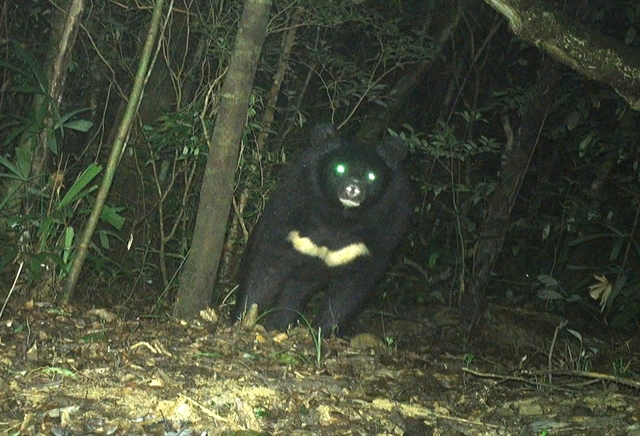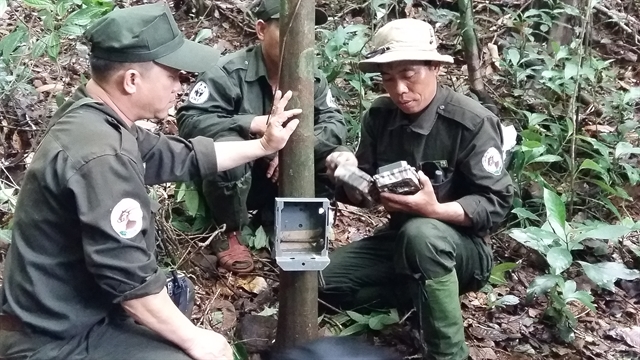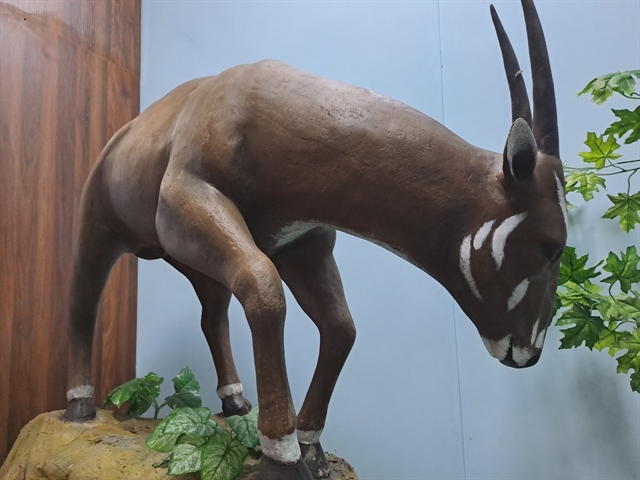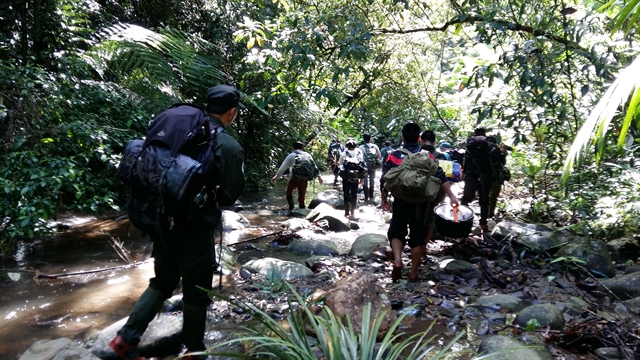 Environment
Environment

 |
| Rangers set up camera traps in the Saola Nature Reserve in A Lưới District in Huế. The centrally-run city is planning a new reserve to promote biodiversity, conservation and restoration. — VNS Photo Công Thành |
HUẾ CITY — Huế City’s People’s Committee has decided to expand its current Saola nature reserve by over 4,000ha.
The new Saola nature reserve in the central city will be established on an area spanning 9,375.55ha, including the current site of 15,303.39ha, an expansion area of over 4,072.16ha.
The new reserve will play an important role in protecting a vast complex of rich biodiversity and endangered species, including the so-called Asian unicorn, while contributing to the restoration of degraded forest area, along with the remaining primary jungle in the Central Annamites.
Deputy director of the city's Department of Agriculture and Rural Development Nguyễn Đại Anh Tuấn said the newly expanded area, while only increasing in overall size by one third, was a critical link. It will serve as a key corridor with Xesap National Protected Area Expansion in Salavan and Sekong provinces (newly promoted to national park status) in Laos, the Quảng Nam Saola nature reserve and the Bạch Mã National Park.
He said the larger protected reserve will create a favourable landscape and natural habitat for the existence and development of flora and fauna populations, and provide stable growing areas for ecological systems in the trans-boundary forest complex.
The successful protection of the Saola (Pseudoryx nghetinhensis) – the critically endangered species – has resulted from endless efforts by local authorities and forest ranger forces with support from the CarBi II (Carbon sinks and biodiversity partnership, phase 2) project under implementation of the World Wide Fund for Nature (WWF), the Federal Ministry for Environment, Conservation and Reactor safety (BMU) of Germany, through the German Development Bank (KfW).
 |
| A model of Saola, a critically endangered species in the reserves of Huế, on display at the eco-tour service centre of Bạch Mã National Park. — VNS Photo Công Thành |
The project director, WWF-Việt Nam, Nguyễn Quốc Anh, said: “The establishment of the new Saola Nature Reserve proved the effective co-operation among partners during implementation of the project.
"The CarBi II project had eventually achieved an important target in providing supports to management and protection activities in the reserve, while expanding protected area in the Central Annamites. It’s a progressive move in biodiversity conservation, and a basic platform for copying effective natural conservation management solution in other regions in Việt Nam.”
According to the WWF, it will continue to support local authorities and partners in protection of the new reserve, improving capability among managers through training courses, forest patrol equipment and devices, legal enforcement and biodiversity protection.
Bạch Mã National Park has been selected as the site for the world’s only breeding centre for the Saola, the extremely elusive forest-dwelling bovine only found in the forests of Việt Nam and Laos.
It is a critically-endangered creature that was the eighth new large mammal species to be discovered in the 20th century.
In a report, WWF-Việt Nam said from 2011 to 2021, WWF-Việt Nam and local authorities supported removing close to 120,000 snares from the then Thừa Thiên Huế Province and Quảng Nam Saola Nature Reserves in central Việt Nam.
 |
| Forest rangers join a patrol in the Saola Nature Reserve in Huế City. The central city has successfully promoted the protection and conservation of biodiverity. VNS Photo Công Thành |
The reserves are home to several rare and threatened species, including large-antlered muntjac (Muntiacus vuquangenis), Trường Sơn muntjac (Muntiacus truongsonenis), Owston’s civet (Chrotogale owstoni), Annamite Striped Rabbit (Nesolagus timminsi), Annamite Crested Argus (Rheinardia ocellata), red and grey shanked douc langurs (Pygathrix spp) and several gallopheasants (Lophura spp). — VNS




